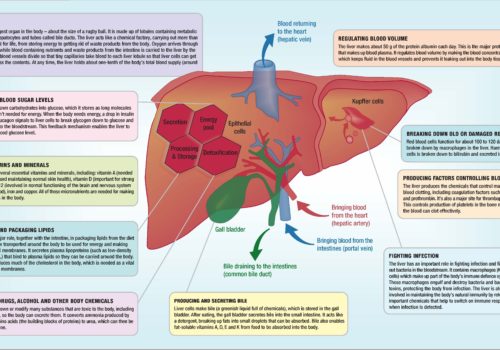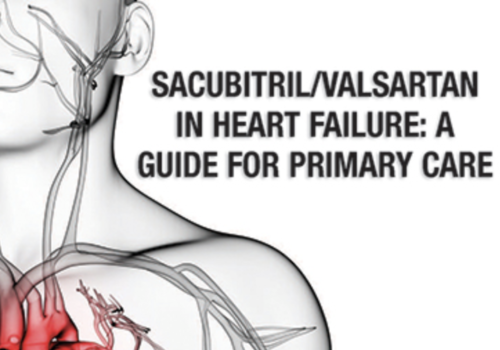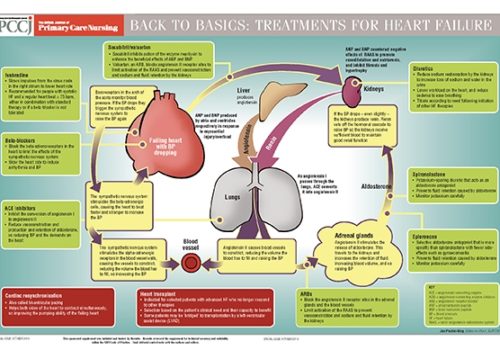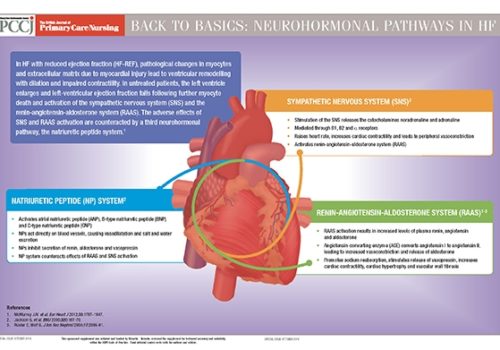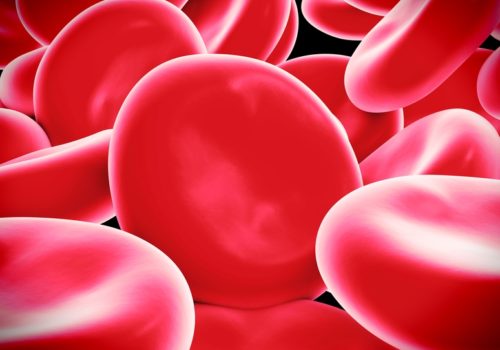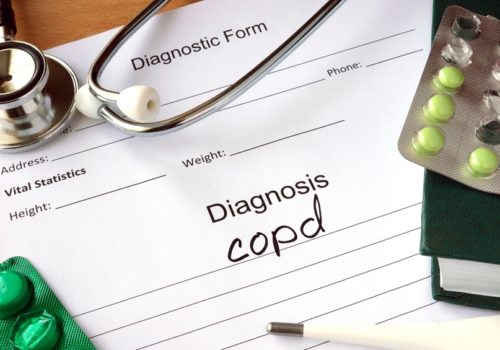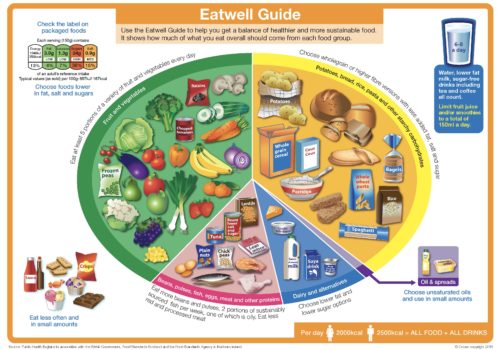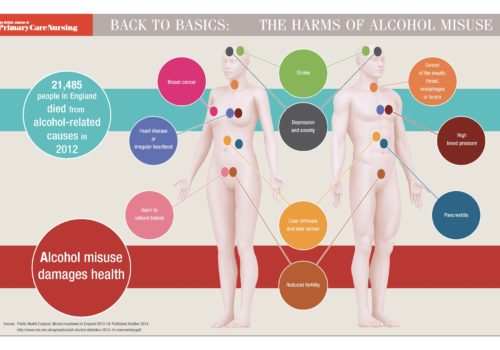Never a week goes by without carbohydrates hitting the headlines, with heated debates raging over low carb diets for weight loss to sugar as “the new tobacco”. Sorting fact from fiction is hard for health professionals and patients alike. In this article we go behind the headlines to explore the truth about carbohydrates in a healthy diet.
Back to Basics: Functions of the healthy liver
This Back to Basics feature is a wallchart describing the functions of a healthy liver – the largest organ in the body. It carries out more than 500 tasks essential for life. This wallchart accompanies details on the new NICE guideline on non-alcoholic fatty liver disease.
Can we safely recommend HRT?
Claire Bellone, clinical nurse specialist at the Chelsea & Westminster Hospital NHS Trust, gives her personal view on how primary healthcare professionals can work with women with menopausal symptoms and implement the recommendations of the NICE guideline on the diagnosis and management of menopause.
New NICE guideline on liver disease
A new NICE guideline provides valuable information on the assessment and management of non-alcoholic fatty liver disease (NAFLD) caused by a build-up of fat in the liver.
Sacubitril/valsartan in heart failure: A guide for primary care
This issue introduces a first-in-class oral treatment for heart failure – sacubitril/valsartan. It provides a comprehensive background to heart failure treatment in the UK, the pathophysiology of the disease and the pivotal trial data on the new drug. Articles give perspectives on the role of the GP, practice nurse, pharmacist and commissioner in using the […]
Back to Basics: Heart failure treatments: mechanisms of action
A number of drug classes are used in the treatment of patients with heart failure. This illustrated Back to Basics poster describes the various drugs and their mechanisms of action to give health care professionals and their patients a greater understanding of heart failure management and where sacubitril/valsartan fits into the picture.
Back to Basics: The neurohormonal system in the pathophysiology of heart failure
This useful Back to Basics poster describes the damaging changes that take place in three key body systems when HF with reduced ejection fraction is left untreated. The sympathetic nervous system, the renin-angiotensin-aldosterone system and the natriuretic peptide system all undergo significant pathophysiological changes as HF progresses.
Improving anticoagulation in patients with atrial fibrillation
A new case study shows the significant reduction in atrial fibrillation-related stroke incidence achieved using the GRASP-AF audit tool. The case study, highlights improvements in key measures including a 4% reduction in the number of patients treated inappropriately, a 5% increase in the use of oral anticoagulation therapy and a 10% reduction in AF-related strokes.
Promoting best practice in COPD management
Chronic Obstructive Pulmonary Disease (COPD) has a major impact on the health and quality of life of patients and there is often co-morbidity with cardiovascular disease. Well planned and structured training for the primary care team could have a major impact on outcomes.
Back to Basics: The eatwell guide
This month’s Back to Basics feature is a wallchart showing the new government Eatwell Guide to help your patients understand how to eat a healthy and balanced diet. You may also be interested in visiting the Eatwell page on the NHS Choices website. This includes useful healthy eating tools such as a calorie checker and BMI calculator.
Back to Basics: NHS Health Check – interpreting results
This month’s Back to Basics feature is a free wallchart to aid interpretation of the NHS Health Check results. Use this information with last month’s Back to Basics NHS Health Check chart to raise your patients’ awareness of cardiovascular risk factors and to determine the best lifestyle and medical approaches for each individual.
Back to Basics: The harms of alcohol misuse
This month’s Back to Basics feature is a wallchart describing the multiple harms of alcohol misuse in men and women. This could be used during discussions with patients at risk of excess alcohol consumption.




